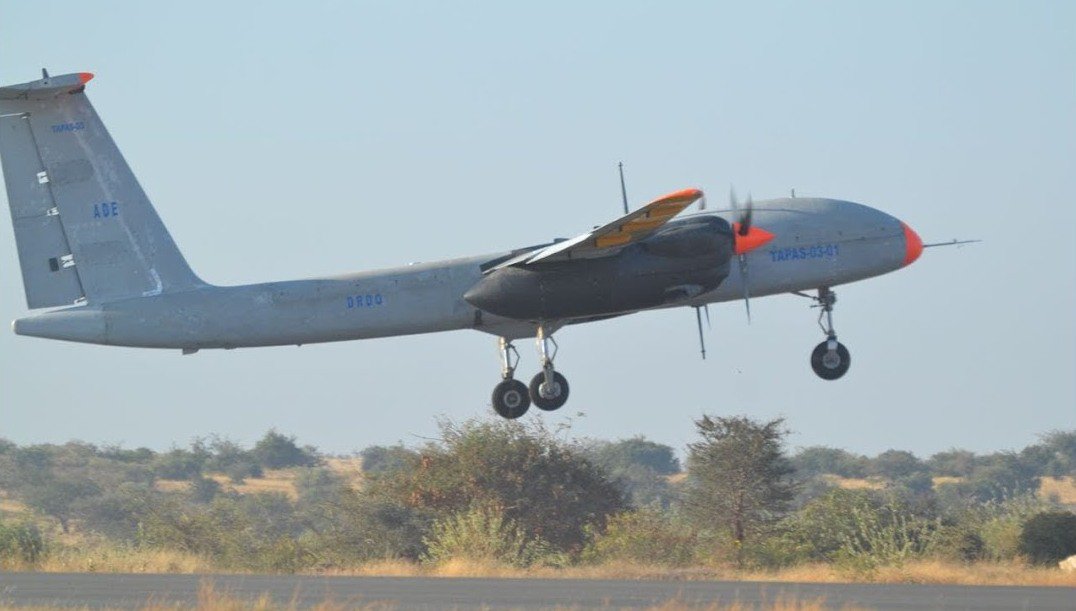Report by Shuchi Giridhar
The Tactical Aerial Platform for Advanced Surveillance — Beyond Horizon 201 (TAPAS BH-201) Unmanned Aerial Vehicle (UAV) manufactured by the Defence Research and Development Organisation (DRDO) and the Indian Navy showcased its C2 (command-and-control) capabilities from a ground station to a warship 148 km away from the Karwar naval station.
What is command and control capability?
The command and control abilities or the C2 abilities of a drone are essential for a safe and smooth flight. The ability of an operator to control the payload, sensors and flight of a drone is determined by the C2 abilities of the drone.
The Command and control capabilities are of two main types – remote control and autonomous flight. In the first type, which is remote control, the drone will have a certain controller which will control the activities and movements of the drone. Either a ship or ground station will likely control the drone. The second type is autonomous flight. Autonomous flight means that the drone will control itself. So, instead of having somebody sitting in a station controlling the drone from afar, the drone will follow a flight plan which would have been input into the drone’s control system beforehand.
A good control system can prevent accidents or any bad incidents. If the operators are not able to control the drone, it can be easily returned to its home location if it has a strong control system. Good control system the drone operator can get a good idea of the environment around the drone and helps in many situations such as avoiding fire or any obstacles.
The TAPAS UAV marks a new era for our Army. The UAV is a medium altitude long endurance or MALE UAV. It has two Russian NPO Saturn 36MT Turboprop engines. It is supposed to have an endurance of 24 hours at an altitude of 35,000 feet.
It has an electro-optical/infrared (EO/IR) camera and can be used for various missions like surveillance, reconnaissance, and target acquisition. It can be used as a ‘flying eye’ to detect enemy ships, find criminals, and can also support disaster relief. Let’s now look at the recording and spying abilities of the drone.
So, as I mentioned before, the drone has an electro-optic camera. An electro-optic camera captures images using light. It can capture clear images even from a very long distance. Long-range electro-optic sensors can be used at day or night and inform about enemy location and movements. There is also a synthetic aperture radar installed on the TAPAS UAV. This system creates high-resolution images using a technique called synthetic aperture. These systems provide the drone with reconnaissance capabilities.
The Tapas UAV is an important achievement for our defence system. It is the first indigenously produced MALE UAV which meets the requirements of our armed forces. It is a valuable asset for our country’s defence.

